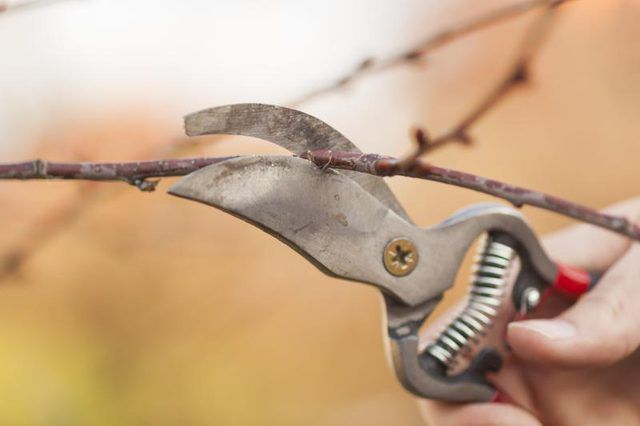Bulbs
Flower Basics
Flower Beds & Specialty Gardens
Flower Garden
Garden Furniture
Garden Gnomes
Garden Seeds
Garden Sheds
Garden Statues
Garden Tools & Supplies
Gardening Basics
Green & Organic
Groundcovers & Vines
Growing Annuals
Growing Basil
Growing Beans
Growing Berries
Growing Blueberries
Growing Cactus
Growing Corn
Growing Cotton
Growing Edibles
Growing Flowers
Growing Garlic
Growing Grapes
Growing Grass
Growing Herbs
Growing Jasmine
Growing Mint
Growing Mushrooms
Orchids
Growing Peanuts
Growing Perennials
Growing Plants
Growing Rosemary
Growing Roses
Growing Strawberries
Growing Sunflowers
Growing Thyme
Growing Tomatoes
Growing Tulips
Growing Vegetables
Herb Basics
Herb Garden
Indoor Growing
Landscaping Basics
Landscaping Patios
Landscaping Plants
Landscaping Shrubs
Landscaping Trees
Landscaping Walks & Pathways
Lawn Basics
Lawn Maintenance
Lawn Mowers
Lawn Ornaments
Lawn Planting
Lawn Tools
Outdoor Growing
Overall Landscape Planning
Pests, Weeds & Problems
Plant Basics
Rock Garden
Rose Garden
Shrubs
Soil
Specialty Gardens
Trees
Vegetable Garden
Yard Maintenance
When to Prune Pecan Trees
When to Prune Pecan Trees. The best time to prune pecan trees (Carya illoinensis) is in winter when they’re dormant. Removing buds, a form of pruning, is done in spring, and you can on occasion safely remove small branches in summer. You can grow pecan trees in U.S. Department of Agriculture plant hardiness zones 6 through 9.

The best time to prune pecan trees (Carya illoinensis) is in winter when they’re dormant. Removing buds, a form of pruning, is done in spring, and you can on occasion safely remove small branches in summer. You can grow pecan trees in U.S. Department of Agriculture plant hardiness zones 6 through 9.
Optimal Pruning Times
Pruning dormant pecan trees in late winter or early spring just before their buds break lets them begin their healing process immediately. The scaffold branches of young pecan trees are selected by rubbing off unwanted buds in spring. Spring is also a good time to remove suckers, unwanted branches growing along the trunk. Letting suckers grow will cause the tree to grow into a bush.
Pruning a Seedling at Planting
The nodes at the end of a pecan branch typically have three buds that will grow into branches. The top bud, the primary bud, will grow in a more upright branch. When you plant the seedling in spring, select a branch growing from the primary bud to become the tree’s central leader and remove 1/3 to 1/2 of it. You’ll now have a whip, or unbranched seedling about 36 to 42 inches tall. The central leader should re-grow from the pruning. If it does not begin to grow by July, cut the tree back to 12 inches above the bud union, that point where the tree was grafted onto root stock at the nursery. If you prune your tree in early summer, the tree will develop stalked buds, primary buds that grow on short stems. Remove these stems. If you let them grow, they will become weak branches. Use a scissor-action hand shears to cut branches up to 1/2 inch thick. For branches from 1/2 inch to 3 inches thick, use a fine-toothed pruning saw. Before using, soak pruning tools for 5 minutes in 1 part 70 percent isopropyl alcohol to 1 part water and let them air dry or rinse with clean water.
Pruning Young Trees
In successive years, remove other primary buds just before they break in spring, letting secondary buds grow into lateral branches. Choose some of these branches to become scaffold branches, main branches along the trunk. The object is to shape a mature tree with six to 10 scaffold branches spaced 8 to 14 inches apart and arranged in a spiral pattern from the bottom to the top. The bottom scaffold branch should be about 4 to 5 feet above the ground. Since pecan wood is brittle, for the first two years select as scaffold limbs only branches that grow at an angle greater than 60 degrees. Beginning in the third year, select branches that grow at an 80 to 85 degree angle. Use a coarse-toothed pruning saw for branches more than 3 inches thick. Clean and disinfect your saw before use as you would pruning shears or a fine-toothed saw.
Pruning Older Trees
The best time to prune older trees to renovate them is when they’re dormant in winter. Remove all damaged, diseased or dead branches plus those that cross one another or are crowded. Disinfect and use a coarse-toothed pruning saw to remove large interior branches. When you make several large cuts, the surge of growth following the pruning will result in fewer nuts for at least three years. If major pruning seems in order, do it over three years to space out reduced nut production.